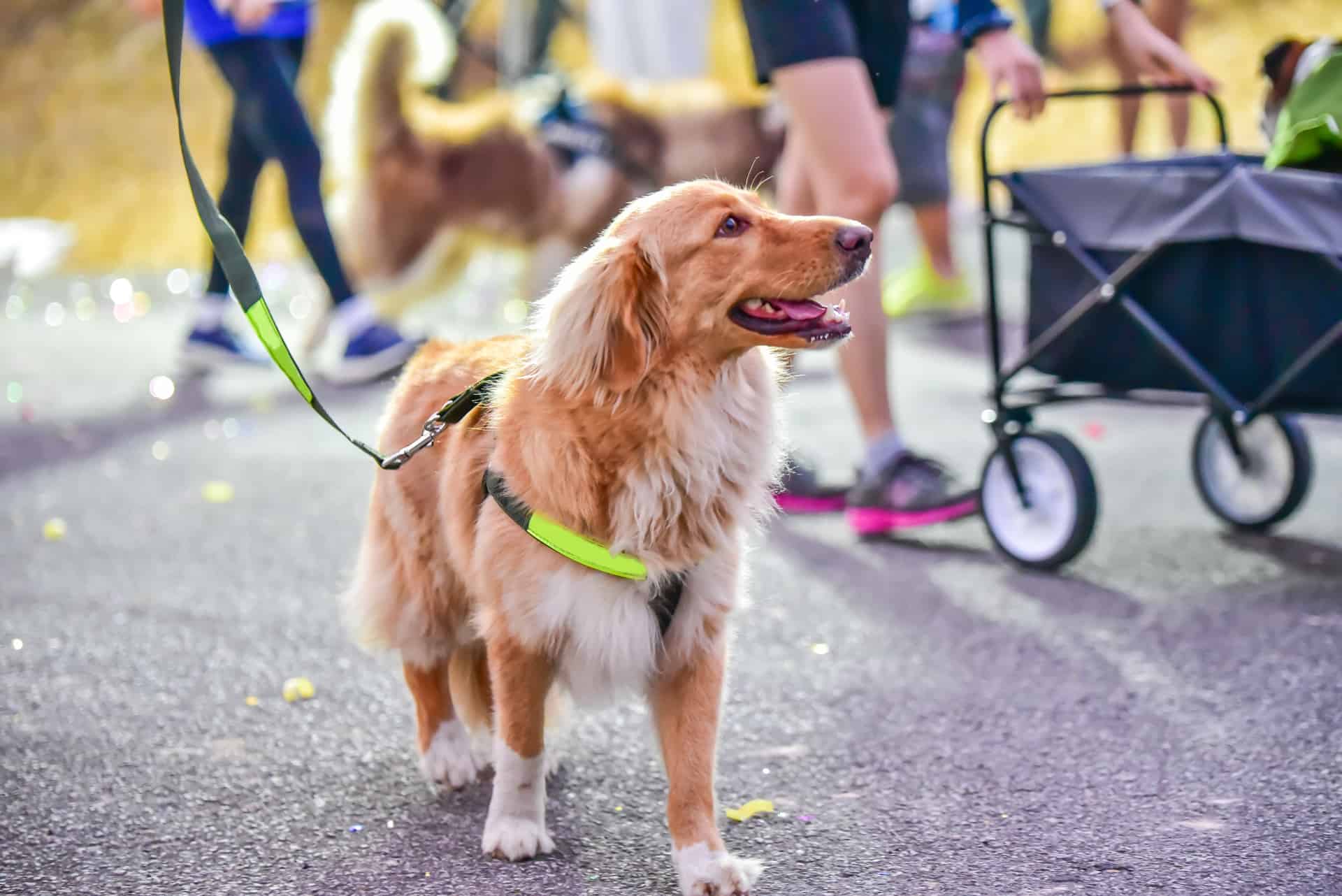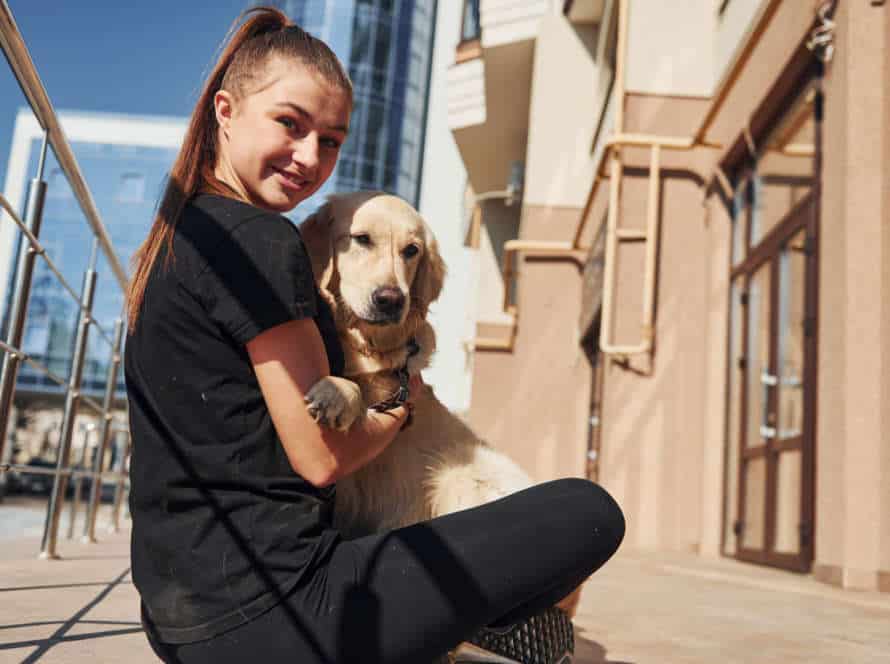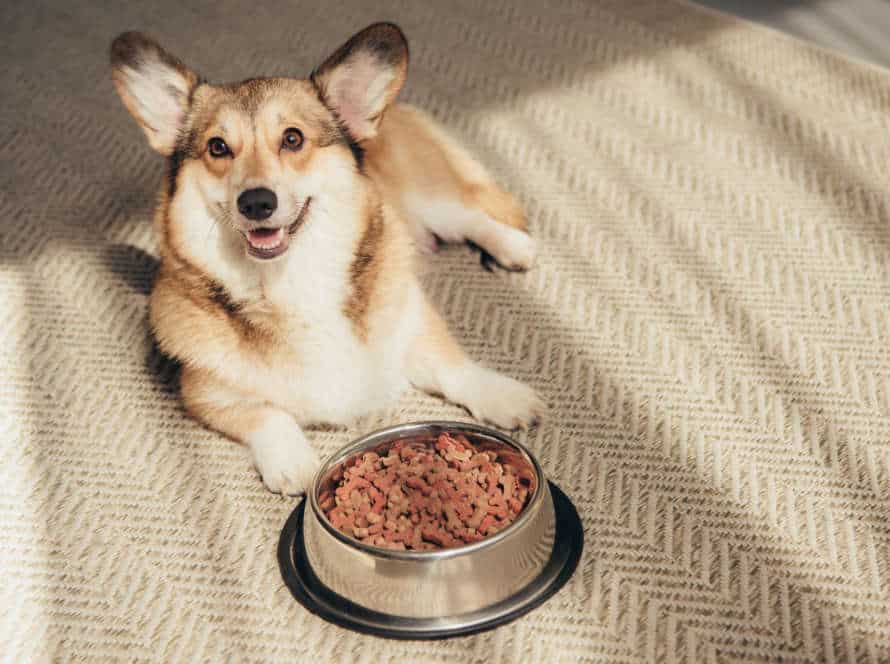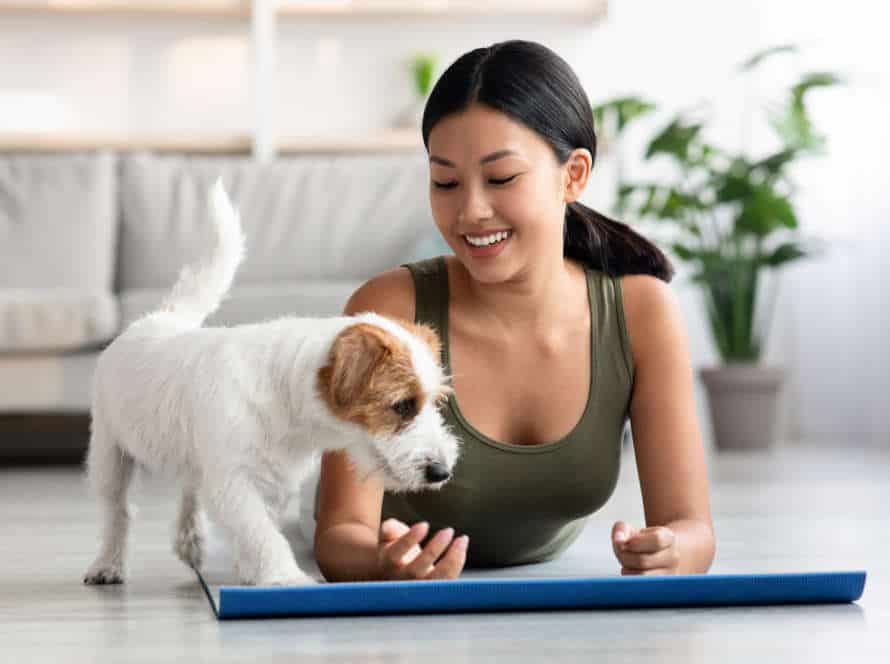The Power of Exercise: Transforming Your Dog’s Life
Exercise can truly revolutionize your pup’s life! Set aside time to give your pup regular exercise and you’ll help them stay slim and fit. Plus, it can reduce stress and anxiety. Here are some ways exercise can be life-changing for your pup:
- Weight Management: Working out helps dogs keep a healthy weight. This lessens the chances of diabetes, heart diseases, and arthritis.
- Behaviour: Hitting the gym releases endorphins. These make your pup feel great and stop them from being anxious and destructive.
- Socialization: Doing activities like obedience training and playing with other pooches can boost their social skills and self-confidence.
- Longevity: Exercise strengthens the immune system and lowers the risk of chronic illnesses. This means more years of happy, healthy living.
Exercising should be part of every dog’s routine. This will guarantee them a long, content life.
Why Exercise Is Important For Dogs
Exercise is a must for doggos! It makes muscles strong and helps keep their weight in check. Plus, it’s great for the heart and keeps their joints flexible. What’s more, regular exercise helps with behavior and emotional health. By giving your pup workouts, you’re helping them live longer and better. Let’s learn more about the power of exercise!
Improve Physical Health and Fitness
Exercise is key for pooches to boost their physical fitness and health. Just like us humans, dogs need regular exercise to keep their weight steady, build muscles, and improve their overall well-being.
Here’s why exercise is important for your pup:
- Weight management: Working out burns calories, stopping your dog from getting overweight or obese. This keeps your doggy healthy and helps avoid future health issues.
- Disease prevention: Exercise also helps prevent illnesses such as heart disease, diabetes, and arthritis. It activates the immune system, strengthening overall health.
- Improved mental health: Exercise relieves pent-up energy, decreasing anxiety, depression, and bad behavior. Dogs that exercise often have more confidence, better problem-solving abilities, and can handle stress better.
So, make sure to add physical activity in your pup’s daily schedule. It could be a walk, jog, or swim. Just begin slowly to avoid over-exertion and injuries. Pro tip- Spend quality time with your dog during exercise, as it helps strengthen the human-dog connection.
Improve Mental Health and Cognitive Function
Exercising regularly has a positive effect on dogs’ physical and mental health, plus their cognitive skills. Here’s how it helps your pup:
- Endorphins released during exercise relieve pain and promote good feelings. This helps with anxiousness and depression.
- Enhanced blood flow to the brain brings more oxygen and nutrients. This boosts cognitive function, memory, and learning.
- Exercising lets out pent-up energy. This reduces destructive and hyperactive behavior.
Pro Tip: Ask your vet before starting any exercise plan for your pup. Check on their health and safety.
Prevent Behavioral Issues
Exercising your pup regularly provides numerous advantages. This includes better physical and mental health, lessened weight gain, joint pain, and stress. Plus, it causes the release of endorphins which bring about a feeling of joy and peace.
This can help stop many behavioral issues like:
- Chewing or digging things without permission
- Excessive barking, whining, or vocalization
- Acting aggressive to people or other animals
- Being overly energetic and not being able to settle down
To avoid these problems, give your dog 30 minutes of physical activity daily. This could involve walking, running, playing fetch, or swimming. Additionally, monitor their diet and provide mental stimulation with toys and training.
Types of Exercise for Dogs
Exercising is most important for the health and happiness of pooches. Many exercises benefit canines – from regular walks to pup sports. Here, we take a peek at the most popular activities for dogs, plus the mental and physical advantages of each.
Walking
Walking is great for dogs! It helps keep them physically and mentally healthy. Depending on your pup’s age, size, and breed, there are several kinds of walking exercises to include in their daily routine:
- Short walks: Perfect for smaller breeds or senior pups. Around 10-15 minutes a few times a day keeps them active without tiring them out.
- Long walks: For larger breeds who need more exercise. 45 minutes to an hour per day is ideal for burning off excess energy.
- Treadmill walks: If your dog can’t go outside, a treadmill is great. Start slow and watch their behaviour before increasing the time.
- Hiking: An exciting, challenging exercise if they love being outdoors. Be sure the trail is safe and bring food, water, and first aid supplies. Pro Tip: Keep your pup leashed and take regular water and snack breaks on longer walks to keep them hydrated and energized.
Running/Jogging
Take your pup for a run or jog – it’s a great way to get them exercise and keep them healthy. Running can help burn off extra energy, as well as improve their heart, joints, and mental state.
Here’s how to make sure you and your pup get the most out of your runs:
- Start off slow and gradually increase speed and distance.
- Pick a safe, comfortable spot like a park, trail, or quiet street.
- Equip your pup with the right leash and harness.
- Bring water and treats to stay hydrated and energized.
- Monitor your pup’s body language and adjust accordingly.
Most importantly, make sure running or jogging is an enjoyable experience for both of you!
Hiking
Exploring the great outdoors is a paw-fect form of exercise for pups! It helps with their physical health, mental stimulation, and strengthens their bond with you. Here are some reasons why hiking is so beneficial:
- Full-body workout: Hiking has different terrain, elevation, and lots of nature – perfect for engaging your pup’s muscles.
- Heart & lung health: Hiking helps improve a dog’s endurance and cardiovascular health.
- Mental stimulation: New scents, sights, and sounds keep your pup’s mind sharp and active.
- Bond strengthening: It’s quality time together – plus lots of fun shared experiences.
Remember, start slow and gradually increase your pup’s intensity and duration. A pro tip: bring plenty of snacks and water for you and your pup!
Swimming
Swimming is great for dogs! It offers many benefits for their physical and mental health. All breeds and sizes can benefit from swimming. It’s a low-impact exercise that builds strength, endurance, and flexibility. Plus, it’s a full body workout – ideal for pups with joint problems or mobility issues.
Here are the benefits:
- Cooling off in hot weather
- Reducing stress and anxiety
- Improving cardiovascular health and lung capacity
- Burning calories and maintaining a healthy weight
- Having a fun bonding experience
But remember to take precautions – use a life jacket if needed, supervise your pup while swimming, and dry their ears after they finish.
Playing Fetch
Playing fetch is a great game for dogs of all ages and breeds. It’s a great way to keep your furry pal healthy and happy. Here are some tips to get the most out of playing fetch:
- Use a soft and lightweight ball to avoid harm.
- Start with short throws and increase the distance as your pup gets more comfortable.
- Mix up throws, like ground rolls or high tosses, to keep your pup engaged.
- Set boundaries and use verbal cues to know when to stop.
- Always supervise your pup while they play fetch to prevent accidents.
Playing fetch is just one of many exercises that can benefit your pup. Other activities like hiking, swimming and agility training can provide physical and mental stimulation, help with obesity and other health problems, and make your pup happier overall.
How Much Exercise Your Dog Needs
Exercise is a must for your pup’s health and joy. It doesn’t matter what breed, size or age they are. Every dog needs a different amount of exercise. Understanding how much your pup needs is very important to keep them fit and content. In this article, you’ll find all the vital info you need to know about how much exercise your doggo should get.
Consider Age, Breed, Health, and Size
When deciding how much exercise your pup needs, age, breed, health and size are all important! Each can influence how much exercise is suitable for them.
Age: Puppies and seniors may have different exercise needs to adult dogs. Excessive or too little exercise can be dangerous, particularly for younger or older doggos.
Breed: Different breeds have various energy levels and exercise demands. E.g., Border Collies need more activity compared to Chihuahuas.
Health: Any medical conditions, injuries or physical restrictions should be taken into account when making an exercise plan. Certain medical issues might need special exercises or limits on physical activity.
Size: Size affects the amount of exercise too. Bigger dogs could need more exercise than smaller pups, but too much high-impact exercise can harm their joints.
By considering these factors, you can design a personalised exercise plan for your pup. This will help with health, happiness and quality of life.
General Guidelines for Exercise Duration
Exercise duration for dogs varies based on age, breed, size, health, and energy level. It’s essential to customize the workout for your pup and avoid overdoing it. Guidelines to consider are:
- Puppies: Short playtime throughout the day instead of a long exercise routine.
- Adults: At least 30 minutes of activity daily–like a brisk walk, run, or playtime at the park.
- Seniors: Moderate exercise such as a leisurely walk to maintain mobility and health.
- High-Energy Breeds: Breeds like Border Collies and Huskies need at least 60 minutes of daily exercise.
Monitor your dog’s behavior during exercise and adjust as needed to keep them safe, happy, and healthy.
Signs of Overexertion or Fatigue
It’s key to recognize the signs of overexertion or fatigue in your pup. To protect them and ensure their well-being, here are some common signs to watch out for:
- Heavy panting and trouble breathing
- Decline in energy and physical activity
- Drooling or foaming at the mouth
- Vomiting or loose bowels
- Stumbling or losing control
- A rapid heartbeat or palpitations.
If you observe any of these signs during or after exercise, give your dog a break and let them rest. Increase exercise levels slowly to avoid overextending them. Also, always consult with your vet to decide the best amount of exercise for their age, breed, and condition.
Creating an Exercise Plan For Your Dog
Design a fitness plan for your pup to revolutionize their life! Regular exercise offers tons of advantages and rewards that go beyond bodily health. A workout plan will give mental stimulation, reduce unease plus stress, supply time to bond, and make better habits. Let’s examine how to construct a good exercise routine!
Scheduling a Routine
To keep your pup healthy, active and content, having an exercise plan is a must. Consistency in exercise is vital for their mental and physical health, so here are the steps to set one up:
- Work out what your dog needs and likes, such as breed, age, weight and activity level.
- Work out how much time your dog needs for exercise each day, based on their needs.
- Select the type of exercise for them – walking, running or swimming?
- Stick to a daily/weekly routine that fits with your availability.
- Be flexible and change it as their needs change.
- Monitor their progress, give praise and enjoy the benefits of a happy, healthy pup!
Incorporating Variety
For your dog to get the most out of their workouts, it’s essential to add variety. Here are some tips:
- Change locations. New sights, sounds and smells will make their exercise more exciting.
- Mix it up. Include walking, running, swimming, fetch and other activities for full-body fitness.
- Include equipment. Use hurdles or tunnels to improve balance, coordination and dexterity.
- Vary the duration. Keep your pup interested and increase their endurance by varying how long they exercise.
With a varied exercise plan, you can improve your dog’s physical and mental well-being.
Choosing the Right Location
Choosing the right spot for your pup’s exercise plan is key. The right location can truly make a difference when it comes to keeping your pet active. Here are some tips to keep in mind when selecting the right spot:
- Check the terrain. Make sure it suits your pup’s abilities, age, and level of exercise.
- Find a safe spot. Ensure it’s secure to stop your pup from running off or getting into any danger.
- Avoid crowded areas. Crowds can be a source of stress and too much stimulation, which can sometimes lead to aggression and anxiety.
- Consider the weather. Choose a place that is comfortable for your pup in terms of temperature, humidity, and weather conditions. This will prevent overheating, dehydration, and other health risks.
Pro Tip: Stay alert and aware of your pup’s behavior, their physical limitations, and any signs of discomfort or stress during their exercise routine.
Making Exercise Fun
Making exercise fun is essential for your pup’s exercise plan. Varying activities can keep your pup active and excited. Here are some ideas to make it enjoyable:
- Agility Training: Set up obstacle courses to improve coordination, focus, and strength.
- Frisbee or Fetch: Dogs love chasing things. Get them running, jumping, and burning calories.
- Dog Yoga: ‘Doga’ is a great way to bond, relax, and build muscles.
- Walking, Jogging, or Hiking: Explore the outdoors together, socialize, and have fun.
- Swimming: Swimming is a low-impact exercise for cardio and respiration.
Include these activities in your routine and your pup will be fit and happy!
Common Obstacles to Exercising with Your Dog
Being a responsible pet owner means keeping your pup healthy and active. Exercise is key for a dog’s life, however, there are usually obstacles in the way. Let us discuss the common obstacles that dog owners face and ways to get past them.
Lack of Time
Time can be a challenge when it comes to exercising with your pup. But, it’s so important for their health, you must make it a priority. Here are some tips for making it happen:
- Get up an hour earlier. Use this time for a quick walk or jog with your pup. This is great for energy and mood!
- During your work breaks, play fetch or run with your pup. Not only is it good exercise, but it relieves stress too.
- Turn everyday activities into exercise. Walk to the store or bank instead of driving. You and your pup benefit.
- Join a dog walking or running group in your area. It’s a fun way to get exercise plus your pup can socialize.
Exercising with your pup doesn’t have to be hard or take much time. Start off small and work up. It’s never too late to prioritize their health.
Bad Weather
Bad weather is a common hurdle when it comes to exercising with your pup. But, it’s still important to find ways to stay active, even when the weather is bad. This will keep your dog healthy and happy! Here are some tips to help keep you and your pup active during bad weather:
- Get a waterproof jacket and boots for both you and your pup.
- Look for exercises that can be done indoors like hide-and-seek or a treadmill.
- Find indoor-dog friendly places, such as malls or dog parks.
- Use interactive toys like laser pointers or Kongs to keep your pup mentally and physically stimulated.
- Remember, dogs need regular exercise, no matter the weather. Prioritize your pup’s physical and emotional needs even when the weather is bad.
Pro Tip: Consistency is key when it comes to exercising with your pup. Try to make a routine and stick to it, even on days when exercising may be difficult.
Physical Limitations
Physical limitations can be a big obstacle to exercising with your pup. It’s a must to think of their age, weight and health before doing anything physical. Here are some physical limits that can stop your pup’s exercise:
- Joint issues or arthritis: Pups with joint problems or arthritis may find it hard to do high-impact exercises like running or jumping. Low-impact activities like walking or swimming can still be good for them.
- Obesity: Overweight pups may have trouble exercising because of fatigue, shortness of breath, and difficulty moving. Low-impact activities should be done first, then increase the intensity and length of exercise as their fitness improves.
- Old age: Senior pups may not be able to do long walks or hard activities like before. Monitor their activity level and customize exercises for their ability.
- Medical conditions: Certain medical conditions, such as heart disease or respiratory issues, can limit your pup’s exercise. Talk to your vet to know what activities are safe and right for your pup.
Pro tip: Always talk to your vet before beginning any new exercise routine with your pup. They can help create a program that is safe and suitable for your pup’s needs.
Behavioral Issues
As a pup parent, you may face diverse behavioral problems that make exercising with your furry buddy trickier. Here are some common obstacles and how to manage them:
- Lack of Motivation? Canines, like us humans, can be dispirited at times. To motivate your pet to stay active, attempt picking novel and thrilling activities.
- Aggression? Hostile behavior can make it hard for you to safely exercise with your doggo. Think about asking for the help of a professional dog trainer or behaviorist.
- Fear and Anxiety? Numerous dogs grapple with fear and anxiety, primarily in unknown settings. To help your pup overcome these difficulties, try bit by bit introducing them to new contexts and circumstances.
- Obesity? Heftiness is a usual issue among dogs and it can make exercising more laborious. Begin with light activities like short strolls, and gradually boost the intensity and duration of the exercises.
Pro Tip – Recall to be patient and consistent when tackling your pup’s behavioral issues. With time and practice, both you and your pup can relish all the benefits of routine exercise.
Tips and Tools for Exercising with Your Dog
Exercise is a great way to help your pup’s physical and mental well-being! It can help them lose weight, gain muscle tone and reduce stress. Plus, it can even stimulate their senses and make them more alert.
Here are some tips and tools you can use to make exercising with your furry friend fun and beneficial!
Interactive Toys
Interactive toys are great for keeping your pup busy and fit! Here are some ideas:
- Stuff Kongs with yummy treats like peanut butter or cheese.
- Frisbees are ideal for active dogs that love to run and jump.
- Puzzle toys are good for problem-solving and mental stimulation.
- Tug toys are a great way to bond with your pup.
Through interactive toys, you can keep your dog healthy, happy and engaged!
Targeting Training
Targeting training is a useful way to boost your pup’s physical and emotional fitness. It involves teaching them to touch a certain part of their body to a target, like your hand or a target stick.
Here’s some tips and tools to get you started:
- Use yummy treats and positive reinforcement to encourage them to touch the target.
- Start off with easy targets like your hand and step it up with more complex ones, like a target stick.
- Include targeting in your pup’s exercise routine, using it to get them moving and stretching.
- Targeting can also stimulate your pup mentally and build their confidence. It’s a powerful tool in transforming their life through exercise.
Joining a Group or Club
If you want to stay motivated, fit, and healthy while having fun with your pup, joining a club or group is the way to go! You can partake in activities like dog walking, running, hiking, and agility training, all while socializing with other people and their furry friends. Here are some tips to get started:
- Search for local dog clubs and community groups that specialize in exercise and activities with dogs. Choose a group that meets your interests, goals, and fitness level.
- Go to meet-and-greet activities or trial classes to see if the group is suitable for you and your pup.
- Make sure your dog is up-to-date on vaccinations, and has the proper training to take part in group activities.
- Be responsible by setting goals, tracking progress, and going to regular meet-ups.
- Have a blast and reap the social and health benefits of exercising with your pup!
Pro tip: Join a group or club that supports a cause you’re passionate about, like animal welfare or conservation. This way, you and your furry companion can get fit while helping out an important cause!
Conclusion and Call to Action
Exercising your pup can be a great benefit to their physical and mental health. Start a consistent routine and you’ll see a happier, healthier dog!
There are lots of options to suit your pup’s needs and preferences. Exercising helps keep your dog’s weight healthy, improves their heart health, and can even reduce the risk of developing serious health issues.
So whether it’s a walk, a trip to the park, or some fetch, make sure to schedule regular exercise for your furry friend.
Don’t forget: A healthy dog is a happy one. And when your pup is happy, you’re happy too!
Frequently Asked Questions
Q: How much exercise does my dog need?
A: The amount of exercise your dog needs depends on their breed, age, and health. Generally, dogs need at least 30 minutes to 1 hour of moderate exercise per day.
Q: What are the benefits of exercise for my dog?
A: Exercise can help improve your dog’s physical health, mental well-being, and behavior. It can also prevent obesity and related health issues.
Q: What are some fun exercises I can do with my dog?
A: You can try walking, running, hiking, swimming, agility training, and playing fetch with your dog to keep them active and engaged.
Q: How do I know if my dog is getting enough exercise?
A: Signs that your dog may need more exercise include restlessness, destructive behavior, weight gain, and excessive barking or whining.
Q: Can exercise help with my dog’s behavior problems?
A: Yes, exercise can help reduce hyperactivity, anxiety, and aggression in dogs. It can also improve their overall obedience and responsiveness.
Q: Is it safe to exercise my dog in extreme weather conditions?
A: No, it is important to avoid exercising your dog in extreme heat, cold, or humidity as it can cause health problems. Always check with your veterinarian before exercising your dog in unusual weather conditions.







